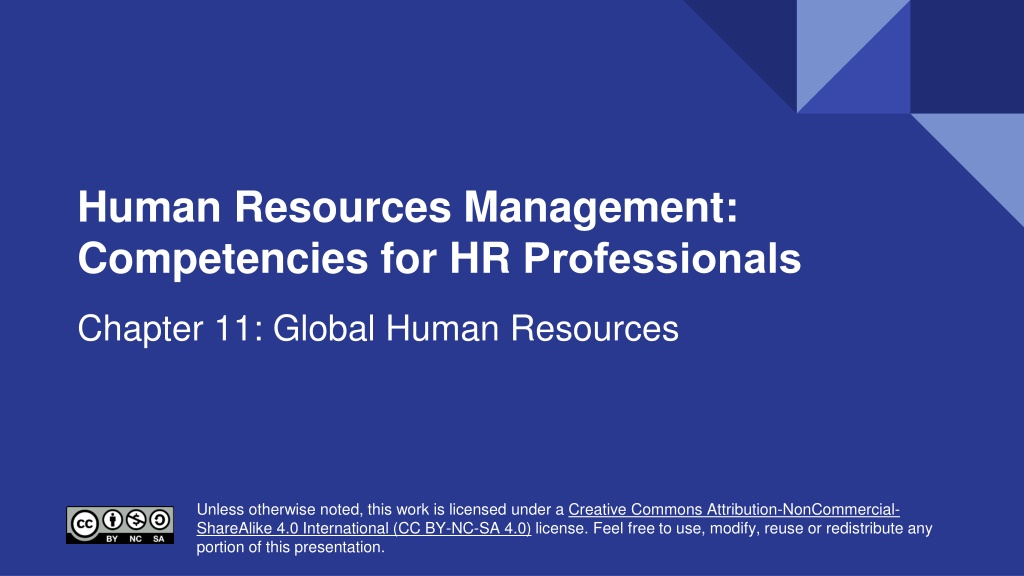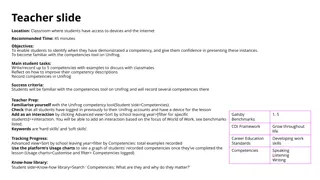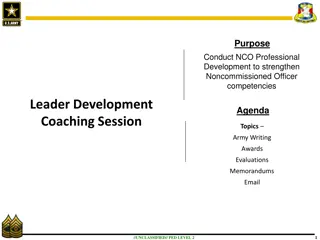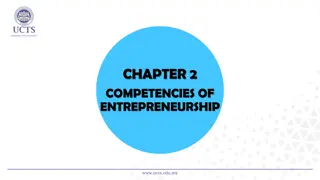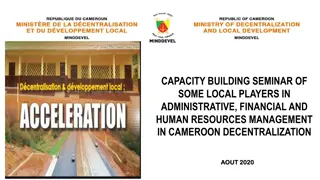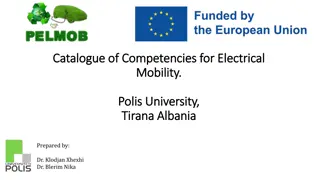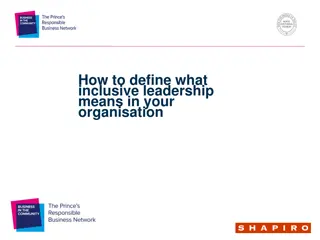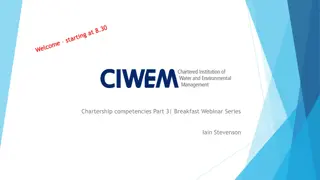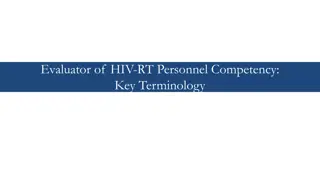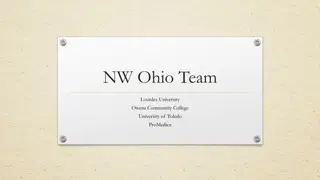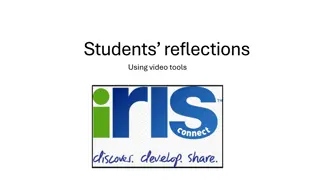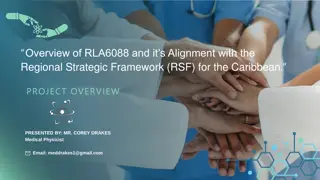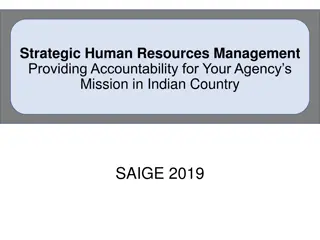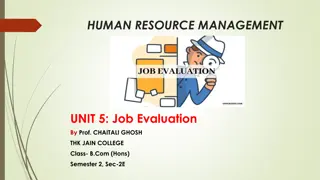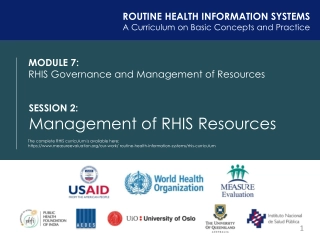Global Human Resources Management Competencies
Explore the intricacies of global human resources management, from understanding international environments to various organizational structures in global companies. Learn about culture shock, training requirements for expatriates, and strategies for success in overseas assignments. Discover how international companies differ from domestic ones and the competencies required for managing diverse cultural, regulatory, and infrastructural landscapes.
Download Presentation

Please find below an Image/Link to download the presentation.
The content on the website is provided AS IS for your information and personal use only. It may not be sold, licensed, or shared on other websites without obtaining consent from the author. Download presentation by click this link. If you encounter any issues during the download, it is possible that the publisher has removed the file from their server.
E N D
Presentation Transcript
Human Resources Management: Competencies for HR Professionals Chapter 11: Global Human Resources Creative Commons Attribution-NonCommercial-ShareAlike 4.0 International (CC BY-NC-SA 4.0) Creative Commons Attribution-NonCommercial-ShareAlike 4.0 International (CC BY-NC-SA 4.0) Unless otherwise noted, this work is licensed under a Creative Commons Attribution-NonCommercial- ShareAlike 4.0 International (CC BY-NC-SA 4.0) license. Feel free to use, modify, reuse or redistribute any portion of this presentation.
Learning Outcomes 1. Describe political, social, economic and technological aspects for global Human Resources. Explain the differences between domestic and global Human Resources and how recruitment and selection, training, compensation and performance management are similar and different. Describe the various organizational structures in international companies. Explain culture shock and coping strategies. Discuss training requirements for expatriates for a successful overseas assignment. 2. 3. 4. 5.
11.1 International Environments PEST (political, economic, social, technology characteristics) analysis is often used to help companies lead and manage their companies. PEST is a type of audit of the company s environment a PEST Analysis by Fanshawe College CC-BY-SA
11.2 Types Of Structures Of Global Companies International Company Multi-domestic Company Transactional Company Global company A domestic company that uses its corporate office to expand into the global market. Multinational company that has control of its operation where its headquarters is established. Complex. Focuses on local responsiveness over global standardization Works to balance the global and local responsiveness.
11.3 Defining The Countries I International companies are different from domestic companies because of the cultural, regulatory, social, geographical, reporting, and infrastructural diversity. International Human Resources Management Competencies Integrate direction from a foreign head office into the context of Canadian operations. Apply practices from Canadian head office into the operations of a foreign field office. Develop an overall HR strategy that can be adapted to various national contexts.
11.3 Defining The Countries II Home Country and Home Country Nationals Host Country and Host Country Nationals Third Country National This Photo by Geralt under a Pixabay License.
Legal and Political Infrastructure Economic 11.3 Environmental Factors Affecting International Projects Culture Security Geography
11.4 Culture Shock And Coping Culture shock feeling of uncertainty and being disoriented when a person is in an unfamiliar way of life in a different culture than their own culture. The 4 phases of Culture Shock 1. Honeymoon 2. Frustration 3. Adjustment 4. Acceptance Dealing with Culture Shock Team must acknowledge that they will experience culture shock. Good stress management techniques are important HR need to work with the team until they feel effective in their job upon return.
11.5 Selection Of Employees (Expatriates) If employees are not selected with the skills and experience necessary for an international assignments, the costs are high. T HR develops special screening processes The term expatriates (expats for short.) is used for employees leaving their home country to work in a host country. Family Moving with Project Team Human Resources supports the family unit by helping the spouse or partner find a new job, find housing comparable to the one they left, assist in finding appropriate schools for the children, and providing transportation.
11.6 A Look at Cross-cultural Conditions & HR Culture affects all aspects of life within a specific population of people including beliefs, values, the norms of the society, and its people s customs. Examples of Cultural Differences include: Canadian culture Indian culture Swedish culture Italian culture Employees need to not only be aware of different cultural aspects, but they also need to adjust to them when working abroad. Women pray during the Hindu festival of Karva Chauth inside a temple in the northern Indian city of Chandigarh by Ajay Verma CC-BY-NC-SA.
11.7 Training International Project Teams This type of training could be called cultural fluency which is the degree of understanding and interaction required with people from different cultures and backgrounds. Learning Priorities Competencies Consult key stakeholders in the development of organizational learning priorities. Identify potential organizational learning priorities that are aligned with organizational strategy. Analyze the return on investment of alternative organizational learning priorities. Select organizational learning priorities to maximize return on investment and alignment with business strategy.
11.7 Supporting International Project Teams Pre-departure training The HR Manager may need to perform training in the foreign country Longer term international projects would require further training Language training for short- and long-term projects is important. Individual counselling as well as group counselling Regardless of its complexity, all training for employees ensures a highly trained team to meet the increasing need of international assignments
Summary Describe political, social, economic and technological aspects for global Human Resources. Explain the differences between domestic and global Human Resources and how recruitment and selection, training, compensation and performance management are similar and different. Describe the various organizational structures in international companies. Explain culture shock and coping strategies. Discuss training requirements for expatriates for a successful overseas assignment.
End Chapter Review I 1. What PEST considerations would a global company make related to Covid19 during the pandemic? Moving out of the pandemic? Discuss in small group. 2. What do you think HR Managers would need to consider if the company was opening a satellite operation in Mexico? Egypt? New Zealand? Thailand? Discuss in small group. 3. What needs to be considered by the company when they move from a domestic company to a multinational company? A transactional company? Work with a partner. 4. Tim Horton s has expanded into the United States. As the HR Manager would you hire American or Canadian managers? Why make the choice you made? Work with a partner.
End Chapter Review II 5. A spouse/partner plays a big role in whether an expatriate will take an assignment overseas. What supports could you offer the spouse/partner to support the success of the assignment? Work with a partner. 6. Discuss all the steps you would take to ensure a successful overseas assignment with a team of managers who are going to work in China for 2 years? Discuss in small group. 7. Have you experienced culture shock as an expat? As a student? If you have, share your experience with another student. (teacher will need to decide who has experienced culture shock and pair students accordingly.) Work with a small group. As a follow up, teacher asks the domestic students what they learned from the foreign student. Individual. 8. Discuss the challenges of performance appraisals for expats? Brainstorm in large group.
